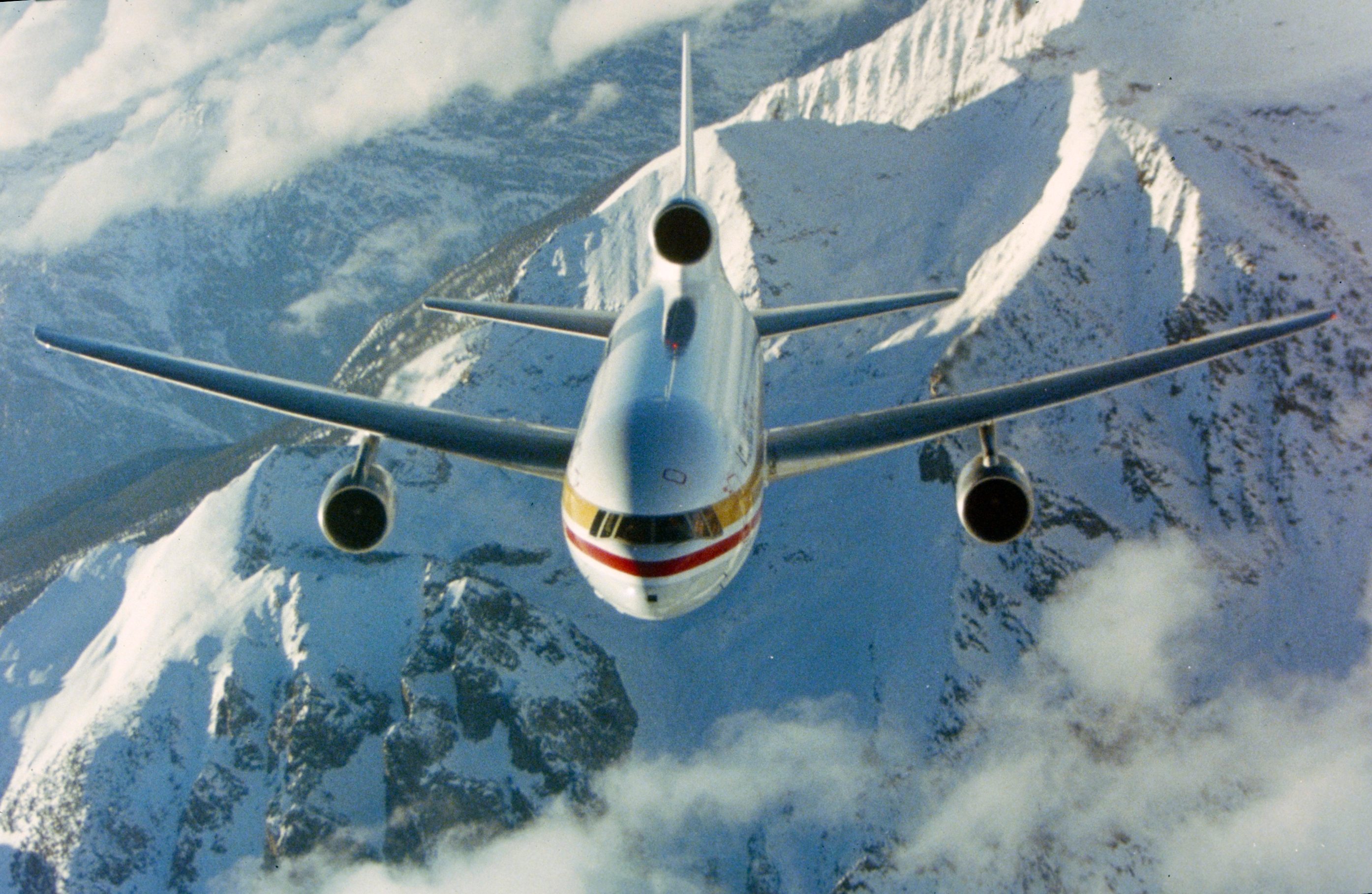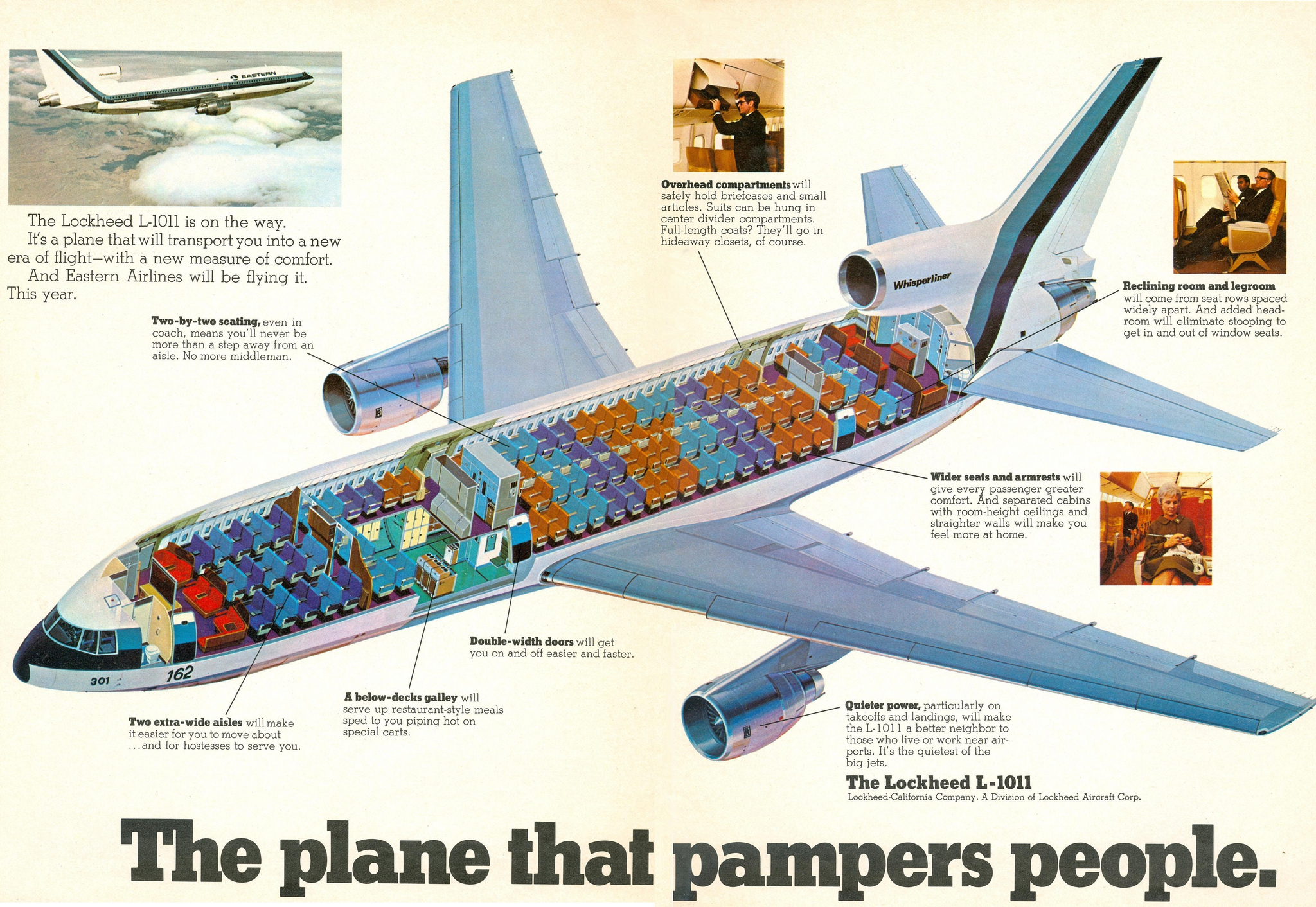The story of the L-1011 takes us back to the 1960s. In the prior decade, the introduction of the jet airliner had revolutionized commercial travel. The graceful de Havilland Comet was first, and was soon followed by a bunch of competition from all over. Travelers were captivated by jets, which made the world feel a little smaller. Jump to the 1960s, and airlines were looking to expand, with the goal of flying more people on larger metal birds. In the mid-1960s, American Airlines went shopping around for a widebody airliner that could haul 250 passengers on transcontinental flights. This aircraft would be smaller than Boeing’s then-upcoming jumbo jet, but larger than a narrowbody. As aviation-focused website Aerotime Hub notes, Boeing was already at work developing the 737 and 747, so that left Douglas (later McDonnell Douglas) and Lockheed. Lockheed found itself in a tough spot. It hadn’t built an airliner since the L-188 Electra turboprop, and production for that ended in 1961. Meanwhile, Douglas had already seen success producing jet airliners with its DC-8. It also had recently launched its smaller DC-9. Lockheed decided to get back into commercial aviation, and to dominate the market it planned to build an airplane that took advantage of bleeding-edge technology. The two manufacturers also differentiated themselves in how they developed their widebodies. As airline industry-focused website Airline Reporter reported, the McDonnell Douglas approach was to get the DC-10 into the skies on a firm budget. Cost overruns were unacceptable, even at the expense of potential design flaws. This would later come to bite McDonnell Douglas, as the aircraft’s early cargo door design allowed it to appear properly closed when it wasn’t. The DC-10 would go on to have the deadliest air crash in history at the time in Turkish Airlines Flight 981. Lockheed’s strategy was different. Where Douglas was conservative, Lockheed wanted to build a plane so advanced that if technologies didn’t exist to make something happen, the manufacturer would invent it. Lockheed initially saw the L-1011 as being a widebody twinjet. However, engine technology of the day would have limited the aircraft’s performance. At the same time, the FAA’s “60 Minute Rule” was in place. This rule initially required aircraft with fewer than four engines to fly within 60 minutes of the nearest airport in case of an emergency. This would make an international flight a non-starter. However, the FAA eventually waived the requirement for trijets, paving the way for three-engine aircraft to dot the skies for years.
An Advanced Aircraft
One way that Lockheed’s design departed from the competition was in the construction of its fuselage. Lockheed made use of metal-to-metal bonding for the fuselage. That in itself wasn’t amazing, as other manufacturers also moved from rivets to bonding. However, the Lockheed deviated from the norm by developing an adhesive so strong that a one square inch of bonding holding two straps together was enough to suspend a car into the sky. The book, Lockheed TriStar: The Most Technologically Advanced Commercial Jet of Its Time, further described the strength of Lockheed’s bonding. In it, the book describes that bonding made the materials substantially stronger while extending service life and adding a ton of corrosion resistance. And since Lockheed was doing this at such a large scale, the aircraft’s parts were put into the then-largest autoclave in the industry. Inside, the autoclave would use heat and pressure to cure the bonds. Another way that Lockheed intended to blow the Douglas out of the water was in the flight deck. The L-1011 is perhaps best remembered for its advanced bespoke avionics. The AFCS (Avionic Flight Control System) list of systems was vast and included a speed control system, an inertial navigation system, a stability augmentation system, and more. Lockheed’s Direct Lift Control system was a part of the package and it is notable on its own. The DLC reduced pilot load during landings by automatically deploying spoilers. Its effect was that the aircraft would have an easier time staying on glideslope without the pilots having to make significant changes to the aircraft’s pitch. But the advanced avionics is perhaps best known for its then novel autoland feature. While not the first commercial aircraft to be able to land itself (that goes to the Hawker Siddeley HS-121 Trident) it was the first widebody to get FAA certification to do so. What it meant was that the L-1011 could land in zero visibility conditions that would force other aircraft to divert. And the hard work done to create such an advanced aircraft wasn’t just limited to its construction and technology. Inside, the cabin was designed to evoke the feelings of being home. Passengers got to enjoy an airy cabin with glare-resistant windows, full coat closets, and a circle of lavatories in the rear just under the intake for the number two (center) engine. The cabin also featured wide aisles and even a below-deck galley and lounge. All of it added up to an experience that airlines marketed as being luxurious and whisper quiet.
Turbulent Skies
Speaking of those engines, now we’re getting to the part where Lockheed’s ambitions began to fall apart. Lockheed chose the Rolls-Royce RB211 turbofan to power the TriStar. Rolls-Royce shot for the stars with a more complex design than the competition. This engine promised a quieter, more economical operation along with a better power-to-weight ratio than the General Electric CF6 turbofans chosen for the DC-10. Unfortunately, Rolls-Royce burned so much money during the development of the RB211 that the company went into receivership in early 1971. Unfortunately, by the time that this happened the L-1011’s engineering was already finalized. One element of the L-1011’s design–the S-duct feeding the number two engine–was designed specifically for the RB211 which was smaller than competing engines. Since fitting another engine wouldn’t fit, Lockheed stuck to the plan. The British government would eventually nationalize Rolls-Royce Limited to save its workforce and restart operations. DC-10 and the L-1011 both had close design schedules. However, this delay would slow the Lockheed’s development by two years. This was just enough time to allow the DC-10 to launch about a year before the TriStar’s 1972 launch. That later than anticipated introduction dealt blows to the aircraft’s sales. American Airlines went with the DC-10, leaving the Eastern Air Lines to be the L-1011’s launch customer. Now, Lockheed had to play catch-up against an airliner that had already been on sale for about a year. Sales of the L-1011 were also mired in controversy. In an effort to score an order from All Nippon Airways, Lockheed paid $7 million to Yoshio Kodama, a figure with ties to the Japanese underworld. Kodama’s job was to influence the government to subsidize the purchase of L-1011 aircraft for the airline. Lockheed paid an additional $3 million in bribes to Japanese Prime Minister Kakuei Tanaka’s office for assistance. A New York Times piece details that this wasn’t Lockheed’s first rodeo with bribery, and it had sent countless millions to officials in other countries to sell planes. Despite arriving on the scene late and scandalous, the plane proved to be a favorite for travelers and flight crews alike. As today’s Lockheed Martin remarks, one pilot called it “the most intelligent airliner ever to fly.” The aircraft even proved to be a safe workhorse just as designed. Lockheed needed to sell 500 TriStars for the project to be profitable. When the aircraft’s production ended in 1984, Lockheed sold just 250 examples. Meanwhile, McDonnell Douglas moved just under 400 DC-10s by 1988. The TriStar’s failure would cause Lockheed to pull out of civil aviation entirely. The DC-10 was the victor, but McDonnell Douglas still didn’t make enough money. It couldn’t even afford to make a DC-10 successor. Thus, when the world moved to big twins all McDonnel Douglas could do was the MD-11 trijet. We’re now a little over 50 years past the aircraft’s introduction and 38 years after the last was built. Today, the TriStar is remembered as one of the most advanced airliners to ever fly, even though it was a total financial failure. Sadly, if you’re feeling nostalgic you won’t be able to fly on one. The last known active L-1011 is Orbital ATK’s ‘Stargazer.’ Originally an Air Canada passenger airliner, it’s now a mobile launch platform. I think Delta had removed that center row divider and crammed another seat in there making it 2-5-2 across, which was the usual setup on DC-10s and some 777s back then. United and American ripped those out of their 777s and installed narrower seats making it 3-4-3 across. Not looking forward to 12+ hours on an American 772 to TLV on Friday in the skinny seats… Unfortunately I never got to fly a TriStar when they were newer. It was probably the most relaxed, comfortable flight I have ever been on. I generally hate flying because because the experience is just so cramped, noisy, stinky and awful. But that one flight was genuinely very nice. One note on the autoland system- while the L-1011 was the first ALS-equipped plane to be certified for ILS Category III approaches, those are not zero visibility approaches but merely reduced minimums below which un-aided pilots are allowed to fly (ie.- flying Cat III approaches requires an autoland system). Even today, no airplane is approved for true zero visibility Cat IIIC landings, though there are starting to be some efforts towards developing a cert package for modern airliners.








